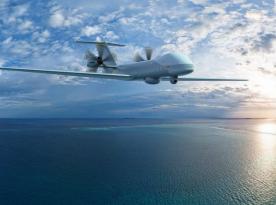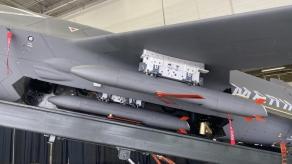Ukrainian FPV drones are effectively solving yet another task: fighting the russian reconnaissance UAVs swarming the airspace over the near-frontline areas and beyond. Just one project led by the volunteer community of Ukrainian activist Serhii Sternenko has harvested more than 400 russian destroyed since inception around August 2024.
Over these past three months, the project labeled Nebesnyi Rusoriz (roughly: Skyborn russian-Slaughterer), has taken down 211 Zala-series, 137 Supercams, 46 Orlan-series unmanned aerial vehicles, and 7 Lancet loitering munitions, according to a report published by Sternenko.
Read more: Innovative Combat: Ukrainian Troops Use FPV Drones with Mounted Weapons (Video)
400+ ЗБИТИХ РОСІЙСЬКИХ РОЗВІДУВАЛЬНИХ БПЛА!Ще півроку тому такий результат здавався неймовірним, а зараз це реальність — наші воїни із вашою допомогою у рамках програми Небесний русоріз збили вже 406 ворожих безпілотниківА саме:Zala - 211Supercam - 137Орлан - 46Ланцет -… pic.twitter.com/jM5MgQeAcd— Serhii Sternenko (@sternenko) November 25, 2024
Defense Express notes, this is not the only volunteer program aimed at supplying anti-aircraft drones to the Ukrainian army, therefore the totality of russian reconnaissance UAVs downed by the new technology is even greater. Objectively, these results contrast with the initial skepticism surrounding the prospects of using cheap FPV drones as an air defense weapon.
For instance, Defense Express cited a thesis by Ukrainian specialists from the military design bureau KB Pivdenne listing down strict requirements for an unmanned aerial interceptor, with particular emphasis on the recommended speed of such a product: 450 km/h (cruising) to 800 km/h (max) in order to be effective.
While the specifications of the FPVs offered by Sternenko and his team are unknown, they appear to have a much simpler design, yet the published drone downing statistics speaks volumes of their performance and — no less importantly — effect on the battlefield.

After all, for the russian invasion forces, drones like Zala, Supercam, and Orlan are an essential component of the reconnaissance-and-strike framework, where the drone is responsible for detecting a target and passing on its real-time coordinates to the long-range weapon systems, such as the Smerch rocket artillery or the Iskander short-range ballistic missile. Leaving the russians without their airborne eyes has a devastating impact on their ability to decision-making and deliver precision strikes.
For illustration, let's recall how just this June Ukraine had to take its Yak-52 trainer aircraft to the sky to intercept the same reconnaissance UAVs, and one of the pilots had to shoot it down with a rifle. On the other hand, FPV drones remain an unsophisticated and scalable weapon with traditional benefits like mass production, low cost, and widespread presence.

Although we should not forget about their drawbacks such as extreme reliance on the operator's skill and effective reconnaissance and intelligence network to detect enemy UAVs, as well as satisfactory quantities of drone detection/warning equipment.
Nonetheless, the use of anti-aircraft FPV drones to destroy enemy scout drones offers a very advantageous cost-benefit ratio: the difference in price between the weapon and the target makes it worthwhile with capital W. Specifically, an Orlan-10 reconnaissance UAV costs approximately $106,000, while a typical FPV drone is in the $700 to $1,000 range, meaning a 100–150 times difference.
Одразу -4 російських розвідБПЛАВоїни бригади НГУ Рубіж позбавили ворога очей у небі та збили 1 Zala та 3 Supercam. Із вашою допомогою - https://t.co/fg3bs2lV4J pic.twitter.com/7ABEWKzana— Serhii Sternenko (@sternenko) November 24, 2024
For that reason, russian armed forces are making great efforts to invent countermeasures against Ukrainian anti-aircraft FPV drones, starting from weird-looking deceptive camouflage to integrating EW equipment or AI-powered evasion techniques into their reconnaissance UAVs.
Read more: Ukraine Will Test a New Cheap Anti-Drone Missile Developed With Estonia














